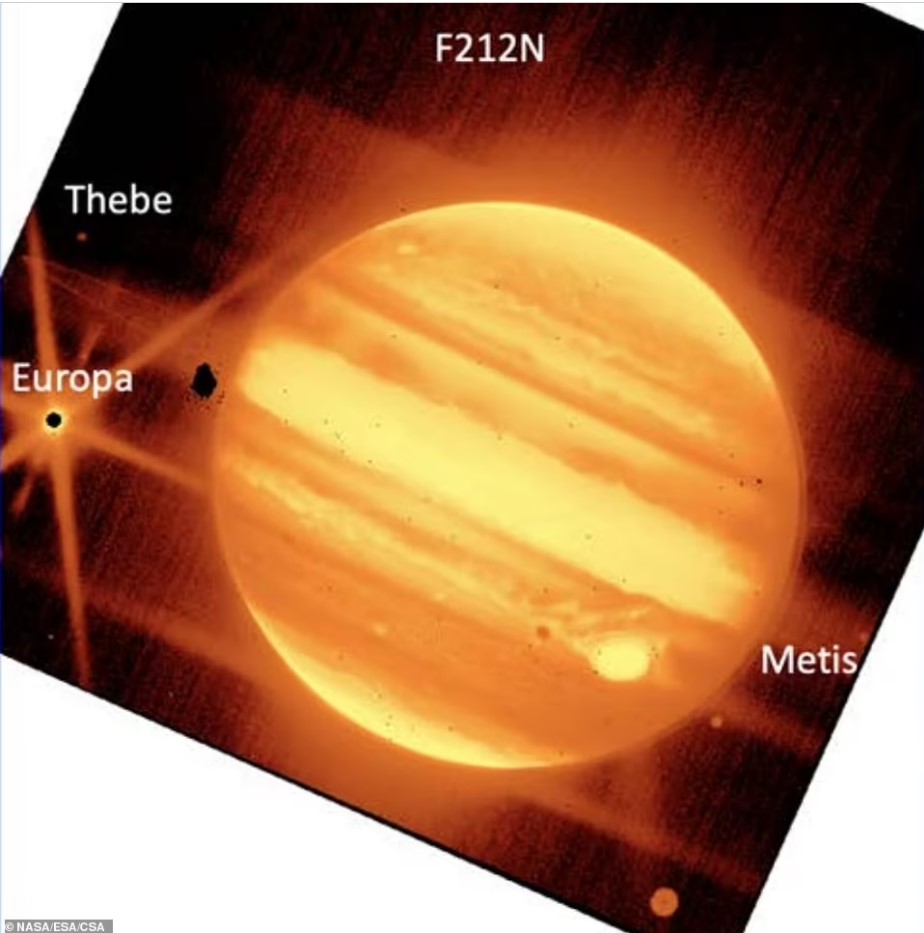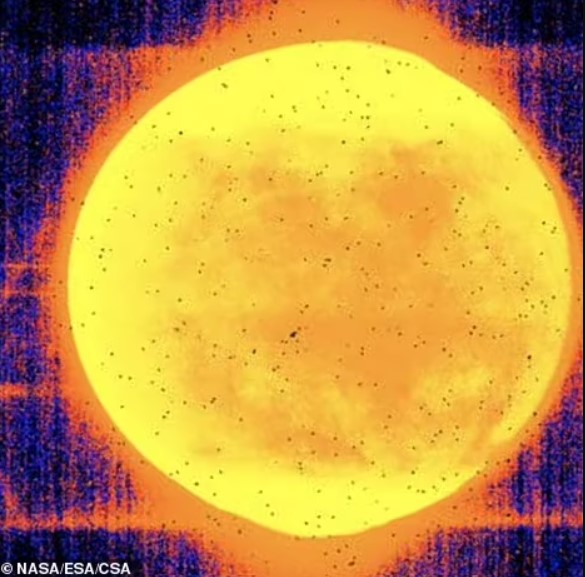- NASA secretly made the photographs available in the telescope’s commissioning report.
- The $10 billion James Webb Space Telescope of NASA has captured two new images of Jupiter.
- In the two JWST Near-Infrared Camera (NIRCam) captured photos, each highlights different light wavelengths using a different filter.
- They display the Great Red Spot, rings, and three of Jupiter’s moons, Europa, Thebe, and Metis.
The magical images captured by the James Webb Telescope have been all over the news for days now. Where people are already amazed by the different pictures and the data related to them, NASA has now secretly published a new image from our own solar system, showing the gas giant, Jupiter.
The James Webb Space Telescope, NASA’s newest flagship instrument that may allow us to look back into the origins of the cosmos and may benefit in the search for extraterrestrial (alien) life, took two new images. These full-resolution images are not official like the previous ones launched by Joe Biden in the White House and by NASA along with other teams. But they were included in a launching document to show that the NIRCam (Near Infrared Camera) can track moving targets.
Both images of Jupiter were taken with a 75-second exposure time. Three of Jupiter’s moons, Thebe, Metis, and Europa, are also discernible in this image along with the faint ring. As per NASA, the Great Red Spot may be seen to the left of Europa’s shadow.
The James Webb Space Telescope aims to investigate whether faraway worlds may be suitable for life in addition to obtaining stellar images of the early universe and possibly solving the mysteries of this planet.
Two Images Of Jupiter By James Webb Space Telescope
The Great Red Spot is a massive, long-lasting storm system that can produce winds of up to 268 mph (432 km/h) and is situated 22 degrees south of Jupiter’s equator. The F212N filter, which highlights light with a wavelength of 2.12 micrometers, was used to capture the first image.

The second image was captured using the F323N filter, which emphasizes light with a 3.23-micrometer wavelength. The JWST Near-Infrared Camera (NIRCam) captured these two photos using a couple of filters allowing light to pass at certain wavelengths.

The images “demonstrated that JWST can track moving targets even when there is scattered light from a brilliant Jovian planet,” states the commissioning report. They also demonstrate their capacity to record small details, such as rings and moons around brilliant planets. Jupiter, Saturn, Uranus, and Neptune are all known as jovian planets because they are similar to Jupiter.

The explanation by the commissioning report goes as, “Observing a bright planet and its satellites and rings was predicted to be problematic due to scattered light that may influence the science instrument used, but also because the Fine Guidance Sensor (FGS) must track guide stars close to the bright planet.”
As per pre-flight modeling, “These observations confirmed the expectation that guide star acquisition works properly as long as Jupiter is at least 140″ distant from the FGS.”

NASA selected nine targets that moved up to 67 milliarcseconds per second in order to test the telescope’s capability to track moving objects. Despite Jupiter being the target with the slowest motion (just 3.3 milliarcseconds per second), all tests were successful. With the completion of this test successfully, the telescope can now track comets, NEAs, and other extra stellar objects.


